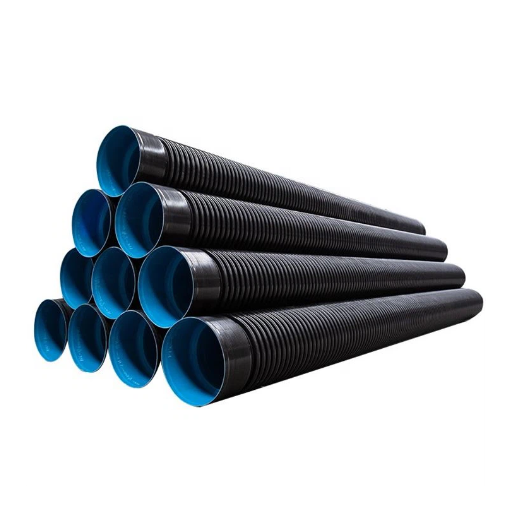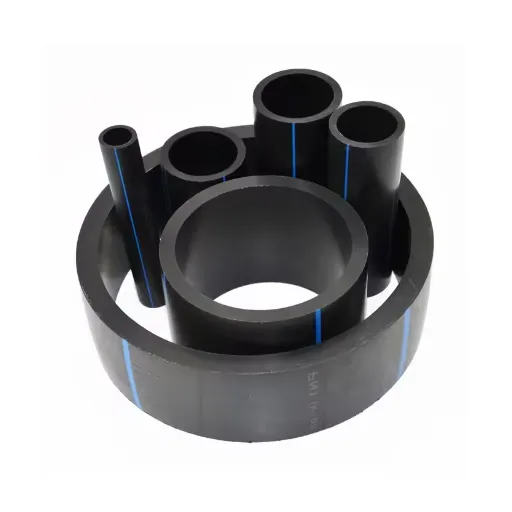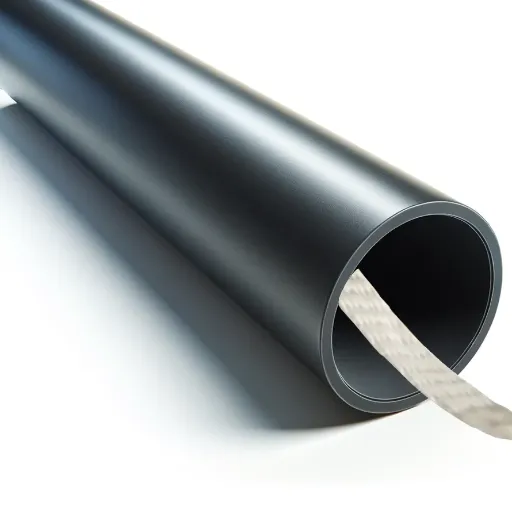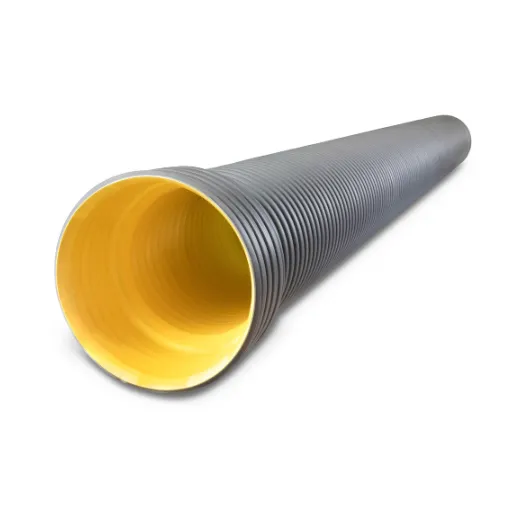Introduction to HDPE Drainage Pipes
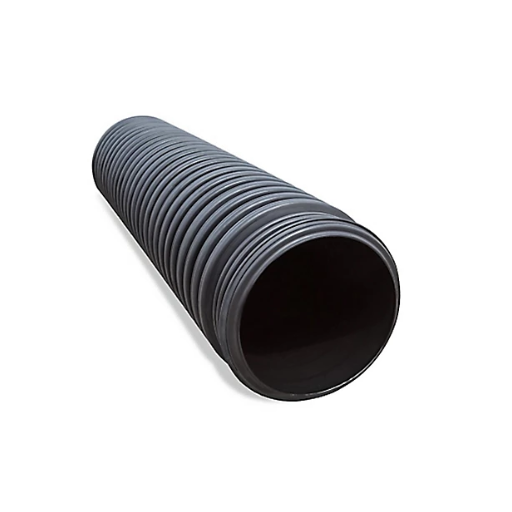
What is HDPE and its Properties?
High-Density Polyethylene, or HDPE, is a thermoplastic polymer known worldwide for strength, flexibility, and durability. It is polymerized from petroleum and possesses attributes of high strength and low density. Unlike other plastics that are heavy and weak, HDPE weighs less and is tough, making it ideal for industrial applications including drainage, water supply, and cable insulation.
Key HDPE Properties:
- Chemical Resistance: Does not corrode or degrade under exposure to water, soil, or most industrial chemicals
- Impact Resistance: Maintains performance even at very low temperatures
- Smooth Surfaces: Reduces friction and allows high flow rates
- Flexibility: Can absorb stress and move with the ground surface
- Recyclable: Environmentally friendly construction material
Advantages of Using HDPE for Drainage Systems
- High Durability and Longevity: HDPE resists corrosion, abrasion, and chemicals, with pipes lasting over 50 years under normal conditions
- Flexibility and Ground Movement Resistance: Accommodates soil shifts without cracking, perfect for seismic or uneven terrain
- Lightweight Installation: Much faster installation compared to concrete or metal, reducing labor costs and construction timelines
- Leak-Proof Performance: Fusion welding creates seamless, leak-free joints
- Environmental Sustainability: Recyclable material with long service life reduces environmental impact
Comparison with Other Materials
| Aspect | HDPE | Plastic | Concrete | Metal |
|---|---|---|---|---|
| Strength | High | Moderate | High | Moderate |
| Flexibility | Excellent | Moderate | Low | Low |
| Installation | Easy | Easy | Difficult | Moderate |
| Eco-Friendliness | High | Moderate | Low | Low |
| Corrosion Resistance | Yes | Yes | No | No |
| Weight | Light | Light | Heavy | Heavy |
| Cost | Medium | Low | High | High |
Types of HDPE Drainage Pipes

Single Wall vs. Dual Wall HDPE Pipes
Single-wall pipes tend to be flexible and cheaper, whereas double-wall pipes are stronger and have smoother flow characteristics.
| Aspect | Single Wall | Dual Wall |
|---|---|---|
| Flexibility | High | Moderate |
| Durability | Moderate | High |
| Flow Efficiency | Moderate | Smooth |
| Strength | Low | High |
| Cost | Low | Moderate |
| Applications | Non-pressure | Heavy-duty |
Corrugated HDPE Pipe: Features and Benefits
Key Features:
- High Strength-to-Weight Ratio: Combines strength with lightweight design for easy handling and installation
- Impressive Corrosion Resistance: Superior to metal varieties in acidic or alkaline environments
- Long Service Life: Estimated 100-year working life under proper conditions
- Superior Flow Efficiency: Smooth inner walls minimize friction loss
- Environmental Sustainability: Made from recycled materials and fully recyclable
Applications of Different HDPE Pipe Types
- Municipal Water Distribution Systems: Corrosion-resistant pipes lasting over 50 years in ordinary working environments
- Agricultural Irrigation Systems: UV-resistant and lightweight for large-scale agriculture applications
- Stormwater and Drainage Management: Structural stability for heavy flow rates and extreme weather conditions
- Industrial Piping Systems: Chemical resistance for transporting chemicals, slurries, and industrial liquids
- Natural Gas Transmission: High-pressure resistance and safety standards for gas distribution
Installation Techniques for HDPE Drainage Pipes
Preparing the Site for Installation
Proper site preparation is critical for ensuring correct installation and long-term performance. This process involves comprehensive site evaluation and careful preparation of the installation area.
Important Considerations:
- Evaluate soil conditions and groundwater levels
- Clear debris, vegetation, and unsuitable materials
- Maintain proper trench dimensions and side slopes
- Ensure uniform grading with no sharp objects
- Consider traffic loads and soil compaction factors
Step-by-Step Installation Process
- 1Site Assessment and Planning: Conduct a thorough evaluation of the installation site, including soil conditions, existing infrastructure, and environmental considerations
- 2Excavation: Properly measure and excavate trench to design specifications for width, depth, and slope requirements
- 3Bedding Installation: Lay a uniform bedding layer of compacted granular material or sand atthe trench base
- 4Pipe Laying: Carefully lower pipe sections using suitable lifting gear, ensuring correct positioning and secure joint connections
- 5Initial Backfilling: Fill primary backfill material around pipe haunches to provide lateral support
- 6Trench Filling: Complete trench filling with successive layers of approved backfill material, properly compacted
- 7Final Inspection and Testing: Conduct visual inspection and perform pressure/flow tests as required
- 8Site Restoration: Restore affected areas to the original or intended condition
Common Mistakes to Avoid During Installation
Critical Installation Mistakes:
- Improper Site Assessment: Incomplete evaluation leading to unforeseen obstacles and delays
- Wrong Material Choice: Using inappropriate or substandard materials
- Non-Adherence to Engineering Specifications: Deviations from established engineering plans
- Improper Component Handling: Misaligned or improperly secured installation components
- Ignoring Safety Requirements: Overlooking essential workplace safety measures
- Skipping Testing Procedures: Insufficient quality assurance measures
Durability and Maintenance of HDPE Drainage Systems
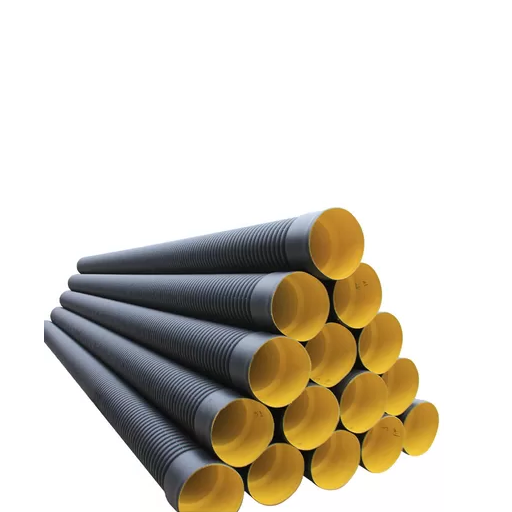
Life Expectancy of HDPE Drainage Pipes
HDPE pipes have a life expectancy of 50 to 100 years under normal operating conditions. This exceptional longevity stems from HDPE’s excellent resistance to chemical and biological degradation, making it suitable for both residential and industrial applications.
Factors Contributing to Long Lifespan:
- Resistance to cyclic loading and environmental stress cracking
- Flexibility allowing accommodation of ground movement
- Non-reactive surface reduces sediment buildup
- Ability to withstand temperature fluctuations and UV exposure
Maintenance Tips for Longevity
- Regular Inspections: Schedule periodic inspections using video or ultrasonic methods
- Proper Cleaning: Use high-pressure water jetting to remove debris and sediment
- Load Monitoring: Monitor operational loads and environmental conditions
- Personnel Training: Ensure maintenance staff understand best practices
Impact of Environmental Factors on Durability
| Environmental Factor | Impact on HDPE | Mitigation Strategy |
|---|---|---|
| UV Radiation Exposure | Can reduce tensile strength by up to 50% in 5 years | Use UV-stabilized HDPE or protective coatings |
| Temperature Fluctuations | Affects ductility and rigidity | Design for operating range -40°F to 140°F |
| Chemical Exposure | Can reduce service life by 20-30% | Select an appropriate HDPE grade for a chemical environment |
| Abrasion and Erosion | Gradually, thins pipe walls thin | Consider higher wall thickness for abrasive applications |
| Soil Conditions | Uneven loads and accelerated degradation | Proper bedding and backfill materials |
Cost Benefits of HDPE Drainage Pipes
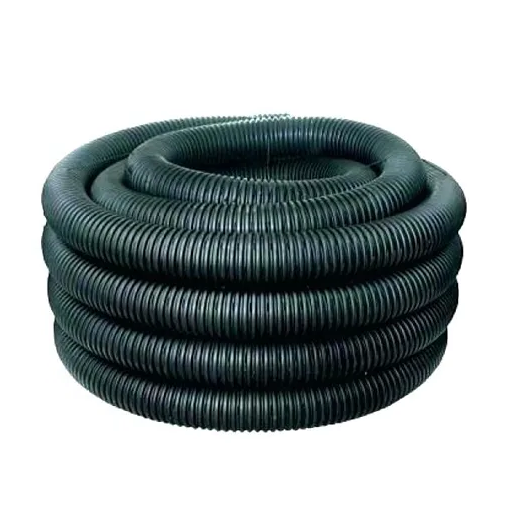
Initial Investment vs. Long-term Savings
While HDPE pipes require a higher initial investment, they provide substantial long-term savings through reduced maintenance costs, fewer replacements, and improved durability.
| Aspect | HDPE | Concrete | Metal | PVC |
|---|---|---|---|---|
| Initial Cost | High | Moderate | High | Low |
| Maintenance Cost | Low | High | Moderate | Moderate |
| Lifespan | Long | Long | Moderate | Moderate |
| Replacement Frequency | Rare | Frequent | Moderate | Moderate |
| Long-term Savings | High | Moderate | Low | Moderate |
Return on Investment for HDPE Systems
ROI Benefits:
- Durability: Minimal repairs and replacements over decades
- Installation Efficiency: Up to 30% reduction in labor and equipment costs
- Leak Prevention: Fusion welding eliminates leakage risks
- Operational Efficiency: Consistent performance with minimal maintenance
Frequently Asked Questions (FAQ)
An HDPE drainage pipe is made from high-density polyethylene, known for durability and flexibility. It’s primarily used for underground drainage applications due to its corrosion and abrasion resistance.
HDPE pipes are lightweight, chemical-resistant, and highly abrasion-resistant. They resist corrosion while maintaining flexibility, making them suitable for various applications including stormwater and waterworks.
Installation involves excavating a trench, laying the pipe at the required slope, and ensuring proper joint fittings using electrofusion or welding systems to enhance joint integrity.
HDPE drainage pipes come in various diameters and thicknesses to satisfy individual drainage needs, suitable for applications from agricultural irrigation to industrial waterworks.
While primarily designed for underground installation, HDPE pipes can be used above ground in certain situations, provided they’re protected from UV rays and weather elements.
HDPE is flexible and impact-resistant, while PVC is rigid and may not perform well under extreme temperature variations. HDPE offers superior flexibility and durability.
Yes, HDPE pipes are environmentally friendly as they’re made from recyclable materials. Their extended lifespan and corrosion resistance reduce the need for frequent replacements.
Common fittings include HDPE elbows, tees, and couplings, designed to ensure leak-free connections while maintaining drainage system integrity.
HDPE pipes perform excellently under varying temperatures. Their flexible characteristics allow them to accommodate expansion and contraction, making them suitable for changing climatic conditions.
HDPE drainage pipes typically last over 50 years when properly installed and maintained. Their corrosion and abrasion resistance properties contribute to their longevity across various applications.
References
- Analyzing Field Performance of Steel-Reinforced HDPE Pipes – University of Kansas ScholarWorks
- Developed Pipe Bursting Specifications Using HDPE – Bowling Green State University ScholarWorks
- Laboratory and Field Performance of Buried Steel-Reinforced HDPE Pipes – University of Kansas ScholarWorks
- Structural Design Procedure for Corrugated Plastic Drainage Tubing – Academia.edu
- Structural Performance of Jointed Plastic Pipes Under Simulated High Landfill – OhioLINK Electronic Theses and Dissertations Center



